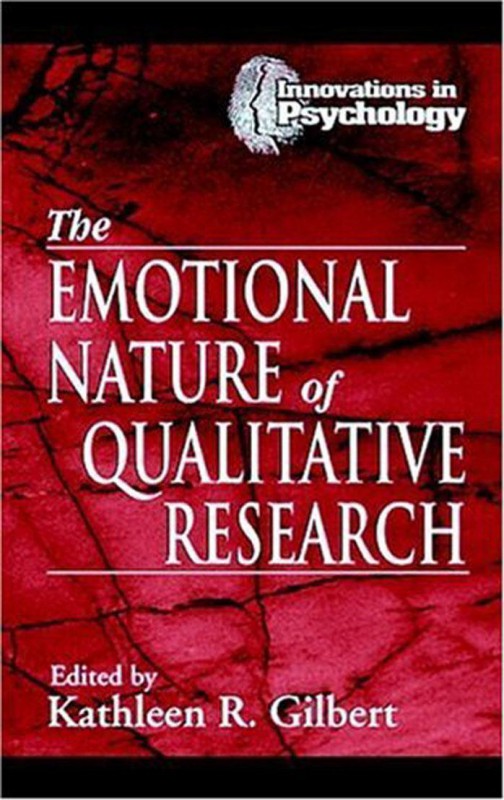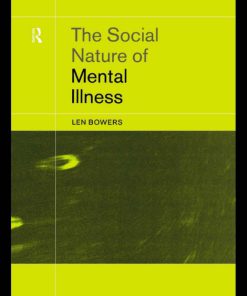The Emotional Nature of Qualitative Research 1st Edition by Kathleen Gilbert 9781040167373 1040167373
$50.00 Original price was: $50.00.$25.00Current price is: $25.00.
Authors:Kathleen Gilbert , Series:Psychology [61] , Tags:Medical / Administration Medical / General Medical / Psychiatry / General Science / Research & Methodology , Author sort:Gilbert, Kathleen , Languages:Languages:eng , Published:Published:Feb 2001 , Publisher:McGraw-Hill Higher Education , Comments:Comments:This book focuses on the place sand purpose of emotions in the research process, and explores the appropriate boundaries. Designed to explore how to manage the emotional content of research, the text service as a supplemental to qualitative research method courses, and is an excellent reference for the professional as well.
The Emotional Nature of Qualitative Research 1st Edition by Kathleen Gilbert – Ebook PDF Instant Download/Delivery.9781040167373,1040167373
Full download The Emotional Nature of Qualitative Research 1st Edition after payment

Product details:
ISBN 10:1040167373
ISBN 13:9781040167373
Author:Kathleen Gilbert
This book focuses on the place sand purpose of emotions in the research process, and explores the appropriate boundaries. Designed to explore how to manage the emotional content of research, the text service as a supplemental to qualitative research method courses, and is an excellent reference for the professional as well.
The Emotional Nature of Qualitative Research 1st Table of contents:
Section 1 A detailed look
Chapter 1 Introduction: why are we interested in emotions?
Introduction
A bit of history
The design of this volume
What we mean by “emotions”
How emotions impact the research process
Finding the balance of emotional engagement
The relationship with participants
Final thoughts
References
Chapter 2 Feminist research with women awaiting trial: the effects on participants in the qualitative research process
Introduction
Emotions and feminist research
Researching women’s lives
A personal and emotional journey
The impact of the research: a personal view
More harm than good? Unanswered questions about the impact of the research
Conclusion
Acknowledgments
References
Chapter 3 The management of self: practical and emotional implications of ethnographic work in a public hospital setting
Introduction
Ethnography
Background
Observations
Role negotiation: the management of self in the field
Explaining the research
Confusion over my role
Dressing for the field
Dilemmas in the field
A sense of belonging
Practical considerations
Uncharted territory
Negotiating a space
On the move
Misreading the signs
The importance of flexibility
Emotional considerations — the management of emotions
Culture shock
Emotional situations in the field
A reconsideration of roles?
Conclusion
Acknowledgment
References
Chapter 4 Narrative methods in qualitative research: potential for therapeutic transformation
Introduction
Nature of narratives
The researcher and the narrative interview process
Conditions for therapeutic transformation
Narratives of disaster and therapeutic outcomes
My background
The event
My disaster experience
Study participants
Data collection techniques
Narrative analysis
Findings
Potential for therapeutic transformation
Participant observation
Researcher’s position
The power of asking for a story
Narrative vs. other approaches
Transformative power of narratives
Conclusion
References
Chapter 5 Mirrors: seeing each other and ourselves through fieldwork
Introduction
“Mirrors”: a confessional tale
Step 1: Christine writes about herself
Step 2: Lisa reads Christine and Julie’s autoethnography
Step 3: Lisa writes about herself
Step 4: Christine reads Lisa’s journal entry
Step 5: Christine interviews Lisa
Christine’s story*
Lisa’s story
Step 6: Christine writes about Lisa
Christine’s story
Lisa’s story
Step 7: Lisa writes about herself
Step 8: Lisa interviews Christine
Lisa’s story*
Christine’s story
Step 9: Christine reads Lisa’s autoethnography
Step 10: Lisa writes about Christine
Lisa’s story
Christine’s story
Step 11: Lisa reads Christine’s dissertation
Step 12: Christine reads Lisa’s narrative ethnography
Commentary
Lessons from researchers
Lessons from respondents
Lessons from writers
Lessons from readers
Conclusion
Acknowledgment
References
Section 2 A broader perspective
Chapter 6 Qualitative research as a spiritual experience
Introduction
Narrative of a spiritual journey
Spiritualist healers in Mexico
Balinese Hinduism
Bitter, bitter tears
Grieving families
Why doing qualitative research can be dangerous
Working on your own issues through your research
You change but significant others might not
Conclusion
References
Chapter 7 Emotions as analytic tools: qualitative research, feelings, and psychotherapeutic insight
Introduction
Social research and emotions
Exploring emotions in qualitative research
Working with emotions: lessons from psychotherapeutic practice
Utilizing emotions within the research process: general issues
Applying understanding — an example
Concluding comments
References
Chapter 8 Collateral damage? Indirect exposure of staff members to the emotions of qualitative research
Introduction
Staff members and their emotions
My personal story — growing awareness
Drawbacks for research staff
Overinvolvement
Underinvolvement
An alternative interpretation of the process
Proximal effects of exposure to the research process
Distal effects of exposure to the research process
Resonating effects of exposure to the research process
My personal story — a new awareness
Benefits for research assistants
What we can do for our staff
Conclusions
References
Chapter 9 Extreme dilemmas in performance ethnography: unleashed emotionality of performance in critical areas of suicide, abuse, and madness
Ethnography, health, and performance
Ethics and truth
Validation
Impact of fictional and dramatic suicide
Suicide in Australia
Tears in the shadows
The impact of fictional and dramatic suicide
Suicide and performance
Summary of outcomes
Conclusion
References
Chapter 10 An act of subversion: night workers on the fringe of dawn — from bow-wave to deluge
Introduction
Credentialing ourselves
Ethnodrama as catharsis
Performed pathogens
Syncing the devil
Busting: the silent terror of stereotypes
Excerpts from Busting: challenges of the drought spirit
Busting: Act II: Scene 3, Chopped Livers
Issues in suicide prevention: bringing out the tin baths
Competing codes and audiences
People also search for The Emotional Nature of Qualitative Research 1st :
is emotion qualitative or quantitative
nature of the study in qualitative research example
what is the nature of emotional intelligence
what is the nature of qualitative research
describe the nature of emotional intelligence
You may also like…
eBook PDF
The Social Nature of Mental Illness 1st edition by Leonard Bowers 9781134587261 1134587260











